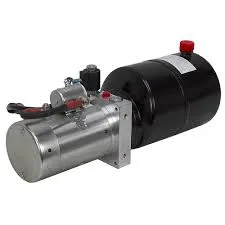Nov . 20, 2024 04:57 Back to list
combined hydraulic cylinder
Combined Hydraulic Cylinder An Overview
Hydraulic cylinders are essential components in numerous applications, ranging from construction machinery to industrial automation. Among these, the combined hydraulic cylinder stands out for its versatility and efficiency. This article explores the attributes, working principles, and applications of combined hydraulic cylinders, highlighting their significance in modern engineering.
A combined hydraulic cylinder, as the name suggests, integrates multiple functions into a single unit. Typically, these cylinders are designed to operate with hydraulic fluid under pressure, enabling them to produce linear motion with high force. What sets combined hydraulic cylinders apart is their ability to perform several tasks simultaneously or sequentially, thus increasing overall system efficiency. For instance, a single combined cylinder may not only extend and retract but also rotate or pivot, all while maintaining a compact design.
The operation of a combined hydraulic cylinder is based on Pascal's principle, which states that when pressure is applied to a confined fluid, it is transmitted undiminished in all directions. When hydraulic oil is pumped into the cylinder, it pushes the piston forward, generating force. In a combined cylinder, multiple chambers can be controlled independently or together, allowing for complex movements and adjustments that enhance the functionality of machinery.
combined hydraulic cylinder

One of the primary advantages of using combined hydraulic cylinders is their space-saving design. In many industries, maximizing space is crucial for efficient operation. By consolidating functions into a single cylinder, manufacturers can reduce the size and weight of machinery, leading to lighter equipment and lower manufacturing costs. Additionally, fewer components mean lower maintenance requirements and less likelihood of mechanical failure.
Combined hydraulic cylinders find applications in various sectors. In the construction industry, they are commonly used in excavators and bulldozers, where their ability to perform multiple actions—such as lifting, tilting, and rotating—makes them invaluable. In manufacturing, they are employed in assembly lines where precision and speed are critical. Furthermore, the automotive industry benefits from these cylinders in systems such as automated lifts for vehicles, enhancing safety and efficiency in workshops.
Moreover, advancements in technology have allowed for innovations in combined hydraulic cylinder design. The integration of sensors and advanced control systems enables real-time monitoring and adjustment of cylinder performance. This level of control improves safety and reliability, ensuring that machinery operates within specified parameters.
In conclusion, combined hydraulic cylinders represent a significant evolution in hydraulic technology, offering enhanced functionality, efficiency, and adaptability. Their widespread use across various industries illustrates their importance in modern mechanical systems. As technology continues to advance, the future of combined hydraulic cylinders is promising, with possibilities for even more sophisticated designs and applications that will likely transform how machinery operates. By embracing these innovations, industries can expect to see improved performance, reduced operational costs, and increased safety in their workflows.
-
Fork Lift Power Units - Hebei Shenghan | Efficiency, Reliability
NewsJul.13,2025
-
1.5-Ton Turbocharged Cylinder-Hebei Shenghan|Hydraulic Solution,Energy Efficiency
NewsJul.13,2025
-
Auto Hoist Power Units-Hebei Shenghan|Efficiency&Industrial Lifting
NewsJul.13,2025
-
Double Acting Power Units-Hebei Shenghan|Hydraulic Solutions,Industrial Efficiency
NewsJul.13,2025
-
1.5 Ton Lifting Cylinder 70/82-40-290-535 - High-Performance Hydraulic Solution | Hebei Shenghan
NewsJul.13,2025
-
Fork Lift Power Units - Hebei Shenghan | Efficiency&Reliability
NewsJul.13,2025
